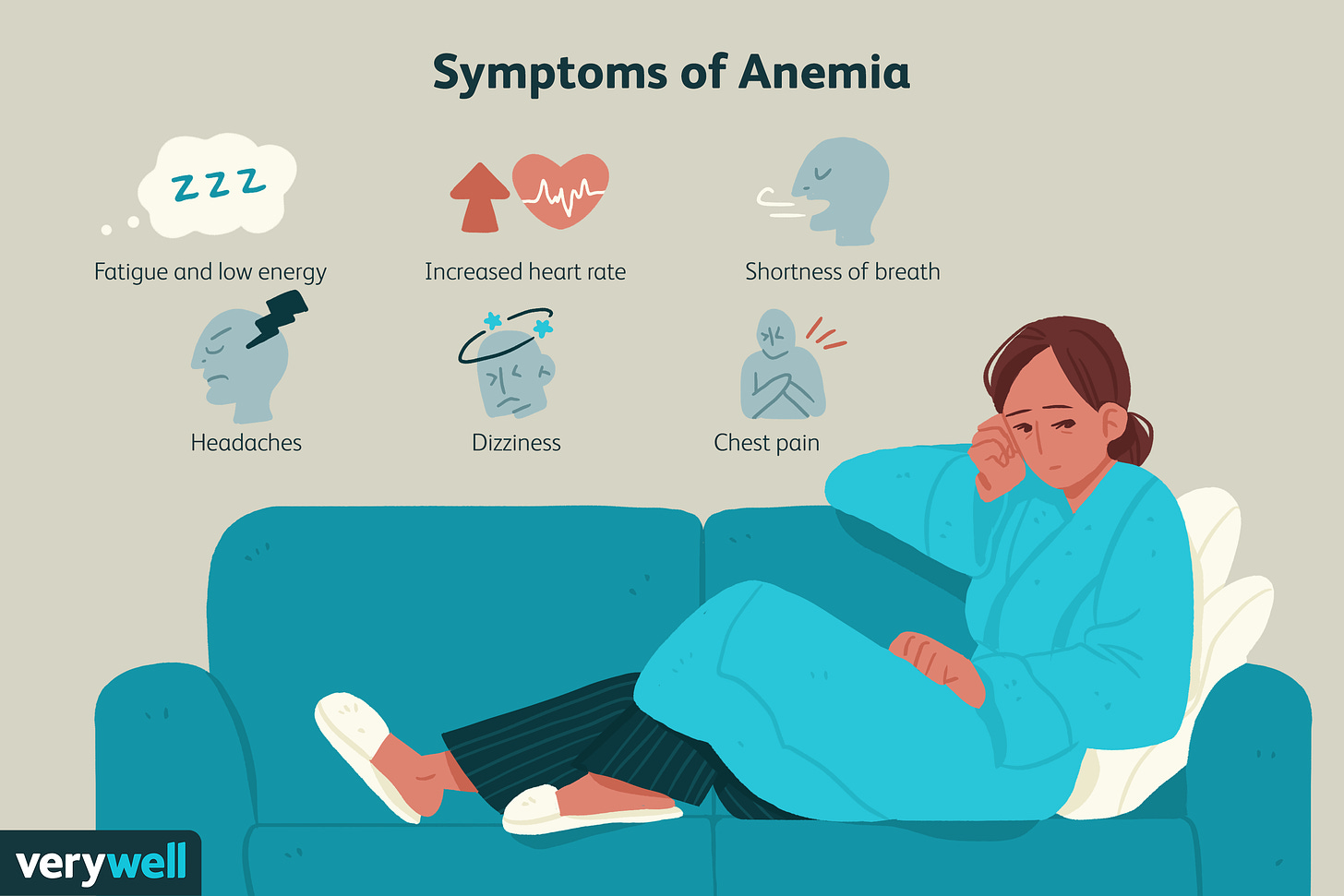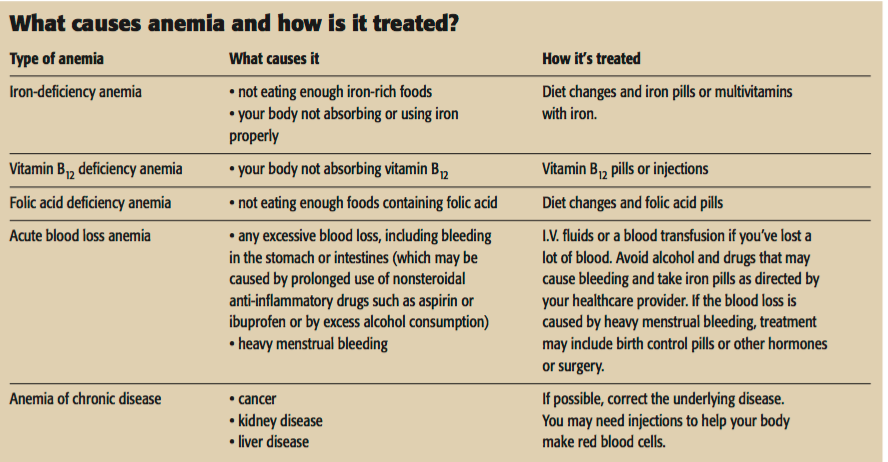
Anemia means without blood and is in reference to inadequate concentrations of hemoglobin within red blood cells (RBCs) (Simmons, 2010). Anemia can be classified either by its cause (etiology) or by the shape and appearance of RBCs (Reisner & Reisner, 2017).
Anemia can occur from a lack of production of RBCs, and can emanate from an insufficiency of stem cells (genetic defects of stem cells, marrow damage, replacement of marrow from abnormal cells) or other factors (i.e., iron and vitamins) (Reisner & Reisner, 2017). Anemia can also occur from a loss of RBCs from blood loss or by destruction of RBCs (Reisner & Reisner, 2017). Below is a synopsis from Simmons (2010) of the etiologic classifications of anemia and how it can be treated:

Treatment is dependent upon cause. More severe forms of anemia may require blood transfusions (Simmons, 2010). However, in many cases of iron deficient anemia, the medical professional may recommend consuming iron-rich foods (i.e., liver, eggs, dark green vegetables) and possibly an iron supplement. Such an example provides a powerful case as nutrition as medicine.
References
Reisner, E. G., & Reisner, H. M. (2017). An introduction to human disease: Pathology and pathophysiology correlations (10th ed.). Burlington, MA: Jones & Bartlett Learning.
Simmons, S. (2010). Anemia. Nursing, 40(6), 34.
-Michael McIsaac
